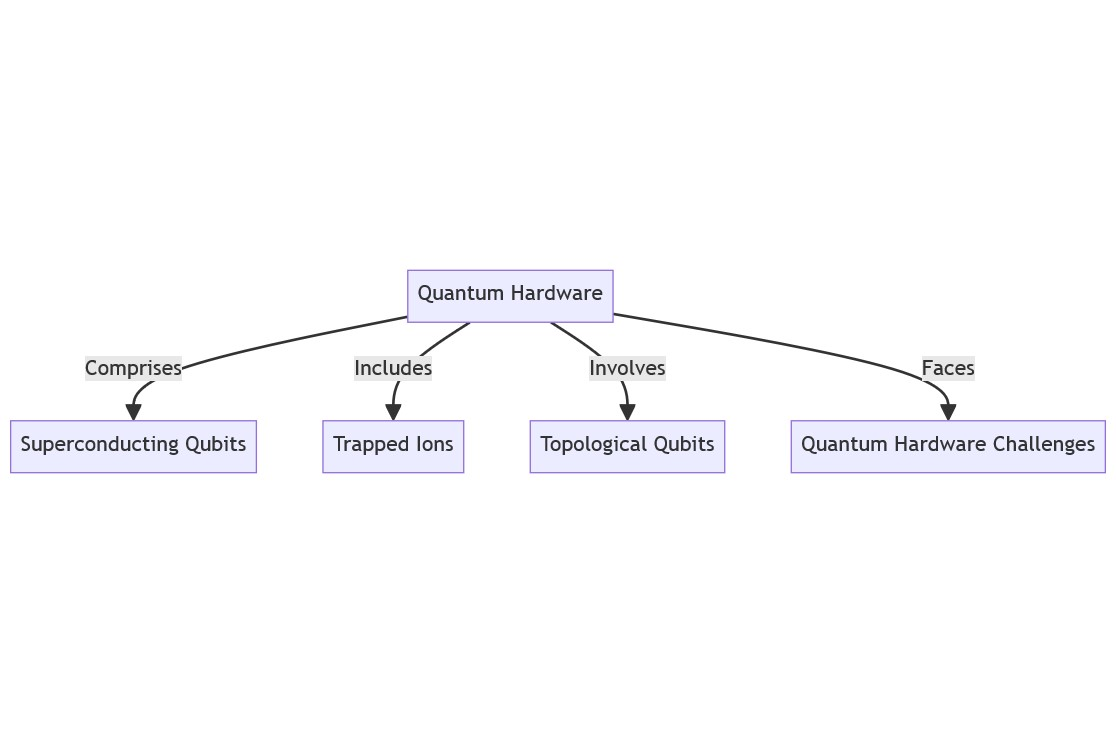By: Aiyaan Hasan, International Center for AI and Cyber Security Research and Innovations (CCRI), Asia University, Taiwan, rayhasan114@gmail.com
Abstract:
At the cutting edge of technological advancement, quantum computing holds the promise of revolutionary applications and previously unheard-of processing power. The current developments in qubit technology and quantum hardware, which are the fundamental components of quantum computers, are examined in this article. This analysis clarifies the current status of quantum hardware and its possible effects on computing in the future, ranging from superconducting qubits to trapped ions and beyond.
Introduction:
Hardware and qubit technologies are the foundations on which the quantum revolution in computing is being constructed.[1] Conventional computers are running out of processing capability because they rely on bits that can only be in one of two states: 0 or 1. With the use of quantum computing and the concepts of superposition and entanglement, it is possible to solve complicated issues that were previously thought to be unsolvable.[2]
There are many obstacles to be overcome on the path to practical quantum computing, and quantum hardware and qubit technologies are at the cutting edge of these efforts. This article explores the latest developments and advances in this rapidly evolving discipline, exploring the many kinds of qubits and related technologies that are bringing quantum computing into the modern day.

Superconducting Qubits:
The superconducting qubit is one of the main competitors in the race for scalable quantum computing. To preserve quantum coherence, these qubits take use of superconductivity, a quantum state with no electrical resistance.[3] Recent advances in the realm of superconducting qubit technologies have mostly aimed at reducing mistakes resulting from external electromagnetic fields and thermal fluctuations. Researchers want to build more reliable and scalable quantum computers by improving qubit connection and using advanced error-correction algorithms.
Quantum coherence and trapped ions:
Another interesting approach for quantum computation is trapped ions. This method uses electromagnetic fields to manipulate and confine individual ions. Long coherence durations and other fundamental characteristics of ions make them appealing building blocks for stable qubits.[4] Advances in ion-trap technology have been made recently to solve issues with qubit coupling and error rates. Through increasing trapped ion coherence durations, scientists want to improve quantum hardware’s computational power and robustness.
Challenges of Quantum Hardware and Hybrid Methods:
Apart from these main qubit technologies, hybrid techniques are becoming more and more popular. These methods mix several qubit types to minimise their drawbacks and maximise their unique strengths. One way to increase qubit reliability and error correction is to integrate superconducting qubits with trapped ions or other hybrid combinations. These hybrid methods do, however, provide a unique set of difficulties, including dealing with synchronisation and inter-qubit communication.
Conclusion:
The field of quantum computing and quantum hardware is developing at a rate never seen before, stretching the bounds of conventional wisdom. Topological qubits, trapped ions, and superconducting qubits all have special benefits, and hybrid strategies are starting to surface as viable ways to improve system performance as a whole. Future developments in quantum hardware development promise to produce ever-more-powerful computers that will transform processing capacities in a wide range of applications.
To sum up, the development of qubit technologies and quantum hardware represents a significant turning point in the history of quantum computing. The global scientific community’s cooperative efforts are advancing the realisation of quantum computing’s full potential. We hope that as these technologies advance, new applications in domains like materials science and encryption will be made possible, as well as discoveries that will redefine computing limits.
References:
- De Leon, N. P., Itoh, K. M., Kim, D., Mehta, K. K., Northup, T. E., Paik, H., … & Steuerman, D. W. (2021). Materials challenges and opportunities for quantum computing hardware. Science, 372(6539), eabb2823.
- Möller, M., & Vuik, C. (2017). On the impact of quantum computing technology on future developments in high-performance scientific computing. Ethics and information technology, 19, 253-269.
- Devoret, M. H., Wallraff, A., & Martinis, J. M. (2004). Superconducting qubits: A short review. arXiv preprint cond-mat/0411174.
- Landa, H., Marcovitch, S., Retzker, A., Plenio, M. B., & Reznik, B. (2010). Quantum coherence of discrete kink solitons in ion traps. Physical review letters, 104(4), 043004.
- Xu, Z., He, D., Vijayakumar, P., Gupta, B., & Shen, J. (2021). Certificateless public auditing scheme with data privacy and dynamics in group user model of cloud-assisted medical WSNs. IEEE Journal of Biomedical and Health Informatics.
- Liu, R. W., Guo, Y., Lu, Y., Chui, K. T., & Gupta, B. B. (2022). Deep network-enabled haze visibility enhancement for visual IoT-driven intelligent transportation systems. IEEE Transactions on Industrial Informatics, 19(2), 1581-1591.
- Zhou, Z., Li, Y., Li, J., Yu, K., Kou, G., Wang, M., & Gupta, B. B. (2022). Gan-siamese network for cross-domain vehicle re-identification in intelligent transport systems. IEEE Transactions on Network Science and Engineering.
- Zhang, Q., Guo, Z., Zhu, Y., Vijayakumar, P., Castiglione, A., & Gupta, B. B. (2023). A deep learning-based fast fake news detection model for cyber-physical social services. Pattern Recognition Letters, 168, 31-38.
Cite As
Hasan A. (2023) Advancements in Quantum Hardware and Qubit Technologiesty, Insights2Techinfo, pp.1